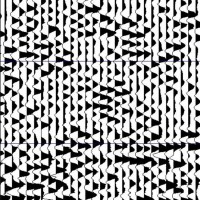
Over the years I have had to deal with many different data sets from around the world. Ethiopian seismic data shot by Russians using Chinese equipment, Canadian well logs drilled by a Norwegian company using American down-hole tools and recorded on Japanese recording media, and even elevation data written in French using a German made pencil.
The one thing that all of these data sets had in common is absolutely nothing.
Standards are so important these days, but I think most of us just take it for granted that the data we receive will be ready to use right out of the box, tape, cd, or download. In my line of work the use of data format standards or recording standards takes all of the fun out of my day. My preference, to be totally honest, is that everyone loosely follow the standards provided by industry, but just make them your own – even just a tiny bit. After all, where is the fun in consistency?
For those of you who don’t know, the SEG (Society of Exploration Geophysicists) formed a Digital Recording Standards Committee in the 1960s and have been trying to bring some consistency to the way data is recorded in all realms of Geophysics. They have done an amazing and somewhat thankless job ever since and still oversee the development of new or revised formats today. The first format for seismic recording created by this team took on the name SEG-A (Society of Exploration Geophysicists – Format A). Format A was shortly followed by SEG-B, SEG-C, SEG-D and eventually SEG-Y. (There is no SEG-E thru SEG-W, no one knows what happened to them – I think the SEG team thought – “Let’s just jump to the final letter of the alphabet. No… let’s go one before the letter Z in case we need to make one more adjustment to it – that way we can keep one up our sleeve.”)
The standards produced by this team were very detailed and explicit. They covered everything from the media to record to, the density, the number systems to be used, the blocking structure, bit use and many more features. And if everyone used the format to write data, then everyone would be able to read the data universally. Brilliant!
In the SEG-Y format specification it says ‘Individual oil companies and contractors may be convinced of their own format’s merits, but the use of this recommended exchange demultiplexed format must be given serious consideration in order to achieve some level of industry standardization. Such thought and many suggestions from users have been utilized in establishing a flexible format that yields specifics and can be used by all companies in the industry. Adoption and use of this format will save substantial sums of money in computer time and programming effort in the future’, (Barry, K. M., Cavers, D. A. and Kneale, C. W., 1975, Report on recommended standards for digital tape formats: Geophysics, 40, no. 02, 344-352.). Seems as though they were trying to put me out of business! But fortunately, not everyone listened to their wise words.
Many companies, however, did use the format specifications as the base for their own internal recording formats. SERCEL created a 96 channel format specification that looked remarkably like the 48 channel SEG-B format form the SEG. In fact, they looked for all intents and purposes identical except for one small difference – 96 channels were interleaved into 48 by secretly alternating samples between the two arrays. Looked like a duck, quacked like a duck – but it was not SEG-B.
In regards to SEG-A everyone made changes to suit their own purposes. The French made some tweaks to it; the Russians ignored it all together, but at least used the letter A in its name; and the Americans developed new technology that made the format specification redundant before the specification could gain traction. The SEG committee then got clever and allowed the standards to have self- defining areas where companies could use the standard, but also modify the format in certain areas and in certain ways to suit themselves whilst still technically meeting the standard.
I did some research on the use of format standards in the exploration industry and found some very interesting information. In 1993 a survey of 50 geologists and geophysicists was conducted on the use of format standards in the industry. Coincidentally, research was done on the merits of Santa Claus. The results were astonishingly similar.
As you can see from the chart, 50 out of 50 people surveyed believe that standards are a good idea. But in reality not many people really know the standards and more people have seen Santa Claus than have sighted an actual recording standard.
All joking aside, the format standards created by the SEG are a great service to us all and a very important asset to the industry as a whole. The standards are publicly available for download on the SEG web site at (www.seg.org) and whilst most of us would not contemplate trying to understand the complexity of the documents, just knowing they are there lets me sleep a little easier at night – except on Christmas Eve….
If you are interested in what standards are available, the SEG publishes them here:
http://www.seg.org/resources/publications/misc/technical-standards
Article originally published in the October 2012 issue of the Australian Society of Exploration Geophysicists’ Preview Magazine.


